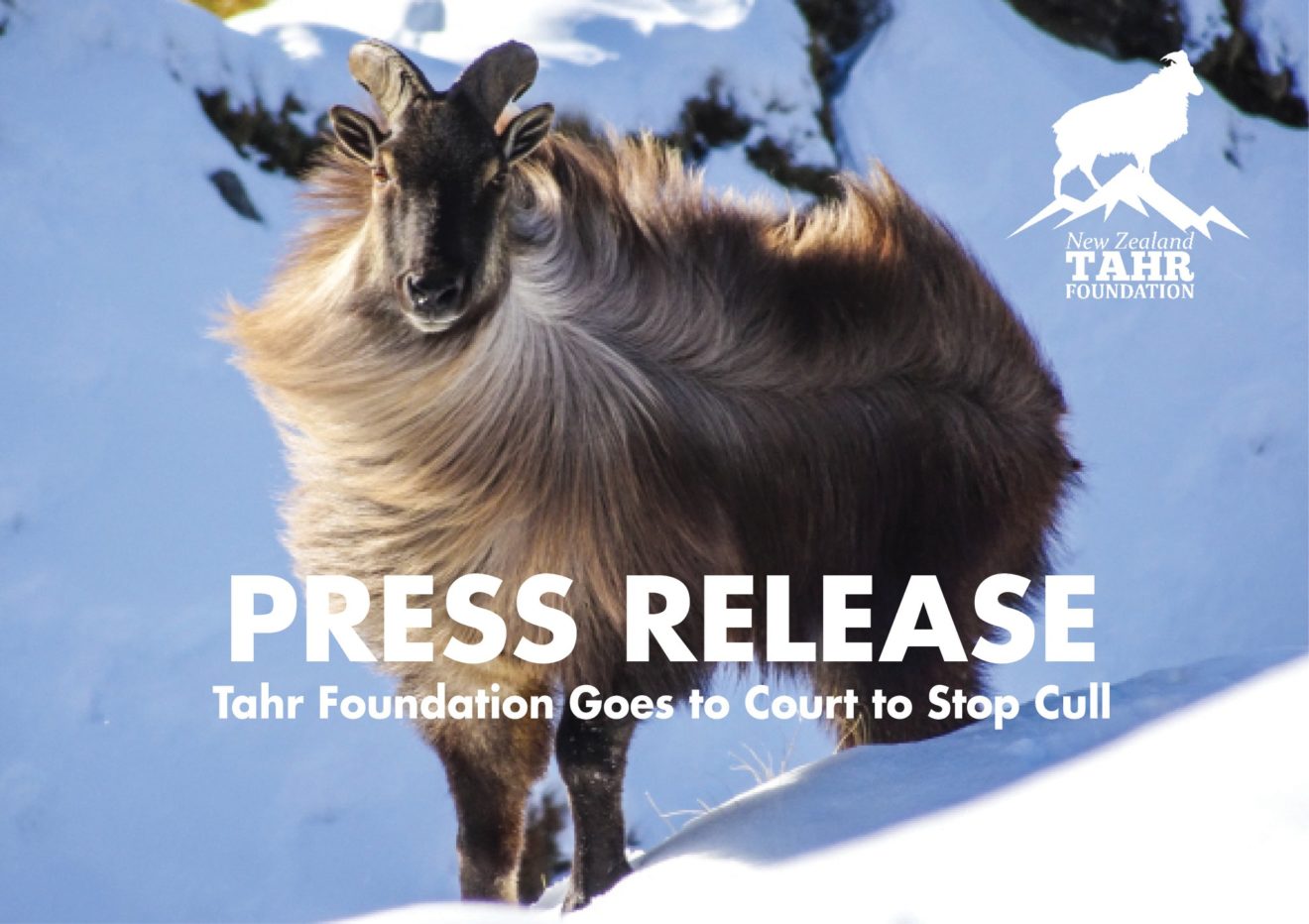Tahr Foundation Goes to Court to Stop DOC Plan to Kill Thousands of Tahr
Hunters are asking the High Court for an urgent injunction to stop the Department of Conservation going ahead with a new plan to kill highly valued Himalayan bull tahr in national parks and other areas of the Southern Alps.
The application for an injunction was filed in the High Court in Wellington on Friday of last week.
DoC’s new Plan is due to come into force on July 1 and would target all Tahr, including mature bulls in national parks. It would also triple the number of helicopter hours being funded to kill all Tahr wherever they range.
Until now, the tahr control plan previously agreed with hunters has only killed the female and juvenile Tahr.
The Tahr Foundation says DoC’s Plan is unacceptable, and it has been left no choice but to go to court to try and stop it being implemented.
“Tahr are magnificent animals, but they will be decimated if DoC is allowed to go ahead with a control plan of this magnitude. There will effectively be no tahr resource left in national parks,” says Tahr Foundation spokesperson Willie Duley.
“DoC’s plan has been drawn up without involving hunters, and then at the last minute, we have been given just two days to look at it,” he says.
“This is not proper consultation – it is a token effort. Hunters are key stakeholders in this process, and we want the courtesy of DoC to engage with us in good faith.”
“We know tahr numbers need to be managed, and in the last three years, we have collectively reduced herd numbers by over 18,000 animals,” Mr. Duley says.
“The benefit of this approach is that DoC achieved the agreed reduction in tahr numbers thanks to good stakeholder involvement, and hunters actively helped reduce herd numbers saving the taxpayer purse.”
Willie Duley says in 1993, the Himalayan Thar Control Plan set an introductory herd limit of 10,000 tahr and also required ongoing reviews and scientific research.
“The Plan required DoC to scientifically establish the number of Tahr which did not exceed acceptable levels of browse, while still providing a viable hunting resource. Over the last 27 years, they have never done this, nor reviewed the Plan as is also required,” he says.
“Until this is done, we will continue to have this ongoing conflict between stakeholders.”
Willie Duley says Tahr are highly valued by hunters and make a significant economic contribution to South Island regions where they live.
“Tahr are magnificent animals, living in fantastic scenic locations. They are a treasure, a holy grail for kiwi hunters who respect them and want the chance to pursue them,” he says.
“These hunters make a valuable contribution to South Island businesses. Covid-19 has hit these businesses hard. With tourist hunting at a standstill, the money kiwi tahr hunters are injecting into the local economy is keeping these operations going and saving jobs.”
The Tahr Foundation was established in 2016 to ensure Tahr are properly managed and to represent hunters’ interests.
The Himalayan Tahr is near threatened in its homeland, and the herd in New Zealand is the only significant and readily huntable free-range population outside the Himalayan Mountains.

